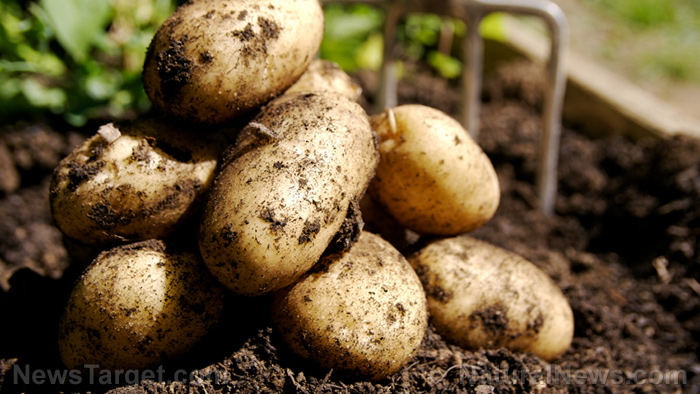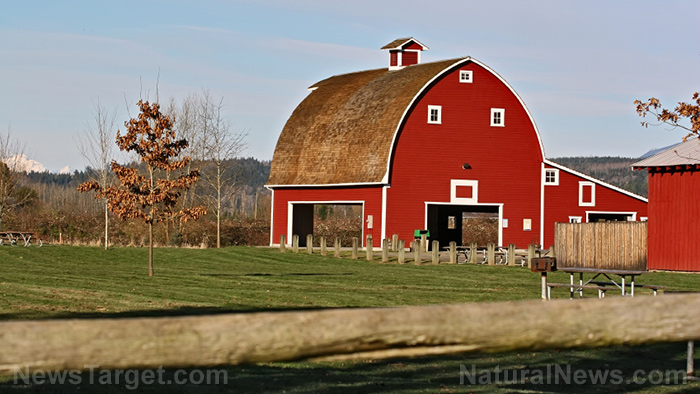Dust Bowl conditions are returning as climate scientists warn of multi-state “mega-drought”
03/15/2021 / By Lance D Johnson

The US Drought Monitor warns that multiple US states are in a period of severe drought, and the conditions for a multi-state “mega-drought” are drawing near. New Mexico, Utah, and Nevada are currently in a period of drought and Arizona and Colorado are not far behind. Parts of California and Texas are also included in this “exceptional drought” area, which includes 265,000 square miles of territory across the Western United States.
In 2020, there were some areas in the Southwest that went more than 200 consecutive days without measurable rainfall. Nevada and Utah just witnessed their driest year in more than 126 years. Not only is vegetation disappearing but dust storms are also becoming more commonplace. The prolonged drought conditions are setting up the Western United States for a return to the Dust Bowl era of the 1930s. A recent storm that swept through the Great Plains was observed from outer space because an immense dust storm billowed from eastern Colorado into Nebraska and Kansas. Gannet Haller, an atmospheric scientist at the University of Utah, said a “tipping point is approaching, where the conditions of the 1930s could return.”
From 2000-2021, mega-drought conditions have escalated in the Southwestern United States
When the Pacific Ocean cools during La Nina conditions, storms are pushed north, leaving the Southwest dry for an extended period of time. A megadrought is a period of drought that lasts at least twenty years and can persist up to ninety years, as recorded in the paleorecord. Research shows that the period from 2000 and 2018 was the second driest of all 19-year periods in the past 1,200 years, and the pattern of drought continues. In 2021, some of these areas haven’t seen more than a tenth of an inch of rain.
The driest cities include Phoenix, Los Angeles and Yuma, which have not recorded any rainfall yet. With very little snow pack this winter, many of these southwestern areas will see very little water across the landscape. In 2020, Las Vegas endured a 240-day drought that spanned from April to December. The drought broke the previous record of 150 consecutive days of drought, seen back in 1959. Phoenix also went through their own 110-day drought, where no measurable rain fell. Yuma, Arizona went 242 days without rainfall last year. (Related: ‘Drought refugees’ to become reality in USA as western half of nation dries up.)
New Mexico farmers scaling back their operations as water supplies dry up
Up to 40 million people could be impacted by this southwestern mega-drought. In times past, people were forced to move away from these areas when the water supply dried up. A migration from California, Nevada and the Four Corners (Utah, Arizona, New Mexico, and Colorado) could be inevitable.
Over two thousand farmers have already scaled back their production in 2021, cordoning off tens of thousands of acres that are now unsuitable for farming because there is not enough irrigation to go around. In fact, New Mexico State Engineer John D’Antonio Jr. has requested farmers across the state to take a year off because the state’s water reservoirs are at dangerously low levels. The snow pack in the mountains is low, too. The two largest reservoirs in the US, Lake Powell (Utah and Arizona) and Lake Mead (Nevada and Arizona), are less than half full. There is not enough water coming from the North to feed the rivers, streams and reservoirs.
For more on the coming Dust Bowl of the 21st century, read more at ClimateScienceNews.com.
Sources include:
Tagged Under: Collapse, crops, drought, drought refugee, Dust Bowl, Ecology, environ, farming, food collapse, food crops, food scarcity, food science, food supply, harvest, mega-drought, rainfall levels, reservoirs, snowpack, starvation, Western US
RECENT NEWS & ARTICLES
COPYRIGHT © 2017 HARVEST NEWS




















